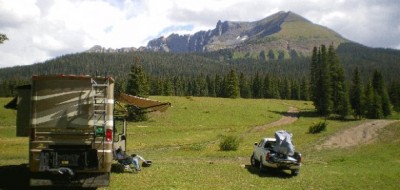By Bob Difley
 The National Scenic Byways Program is part of the U.S. Department of Transportation, Federal Highway Administration, in collaboration with other public and private agencies. Since 1992 the National Scenic Byways Program has funded more than three thousand projects for state and nationally designated byway routes in all 50 states.
The National Scenic Byways Program is part of the U.S. Department of Transportation, Federal Highway Administration, in collaboration with other public and private agencies. Since 1992 the National Scenic Byways Program has funded more than three thousand projects for state and nationally designated byway routes in all 50 states.
If you haven’t moved exploring the nation’s scenic byways to your bucket list for the areas in which you travel and also for the areas you are headed to, you are missing some of the most exciting parts of what makes up America, and you have the best way to see them–your RV.
Many of America’s most scenic drives wind across and through remote public lands managed by the National Forest Service (NF) and the Bureau of Land Management (BLM). Though not receiving the same publicity as our National Parks and Monuments, the National Scenic Byways (NSB) and the especially notable All-American Roads are mostly low-traveled, two-lane roads that showcase the historic, scenic, and cultural treasures that define America.
But since they are often remote, it can sometimes be difficult finding private campgrounds with typical amenities and hook-ups. Along the way you may have to cover the whole route in one shot–from an RV resort at one end to one at the other. Unless, of course, you have honed your boondocking skills and are comfortable dry-camping either in primitive (no hook-up) government campgrounds or boondocking in the open forest or desert.
Your boondocking skills enable you to take your time, stopping often, even just for a night at a nice forested campsite, and exploring the area more fully. And boondocking, like the byways themselves, are free. Some, with hiking and biking trails, waterfalls, scenic overlooks, and hot springs you would have to skip if you weren’t able to boondock along their routes. Or you would spend a lot more time and fuel driving in and out of the forest from a developed campground at its extremities.
 You may not have even heard of most scenic byways that are not within your regularly traveled routes, such as Arizona’s 123-mile long Coronado Trail Scenic Byway (photos), where you drive through high desert and forests, and see former Native American footpaths first used as horse paths by Conquistadors and prospectors, then as wagon trails for pioneers. While admiring the scenic beauty, imagine nomadic tribes of hunters, gatherers, trappers, outlaws, homesteaders, lumberjacks, and ranchers living along the byway.
You may not have even heard of most scenic byways that are not within your regularly traveled routes, such as Arizona’s 123-mile long Coronado Trail Scenic Byway (photos), where you drive through high desert and forests, and see former Native American footpaths first used as horse paths by Conquistadors and prospectors, then as wagon trails for pioneers. While admiring the scenic beauty, imagine nomadic tribes of hunters, gatherers, trappers, outlaws, homesteaders, lumberjacks, and ranchers living along the byway.
At the National Scenic Byways Program’s Web site you can request a free map and guide to the more than 150 scenic byways to help you plan your summer adventures through some of America’s most exciting landscapes.
For more RVing articles and tips take a look at my Healthy RV Lifestyle website, where you will also find my ebooks: BOONDOCKING: Finding the Perfect Campsite on America’s Public Lands (PDF or Kindle), 111 Ways to Get the Biggest Bang for your RV Lifestyle Buck (PDF or Kindle), and Snowbird Guide to Boondocking in the Southwestern Deserts (PDF or Kindle), and my newest, The RV Lifestyle: Reflections of Life on the Road (Kindle reader version). NOTE: Use the Kindle version to read on iPad and iPhone or any device that has the free Kindle reader app.

